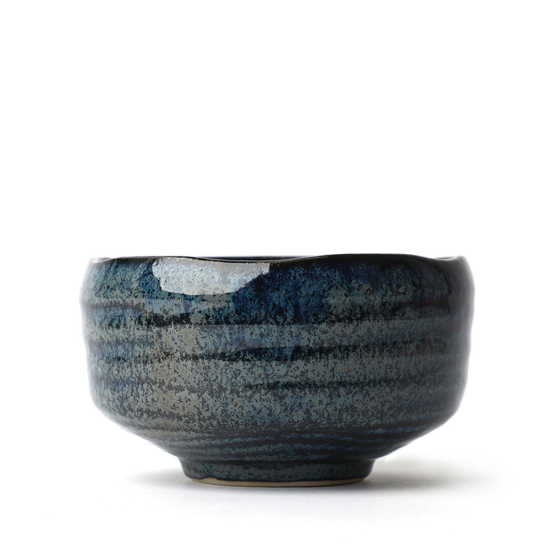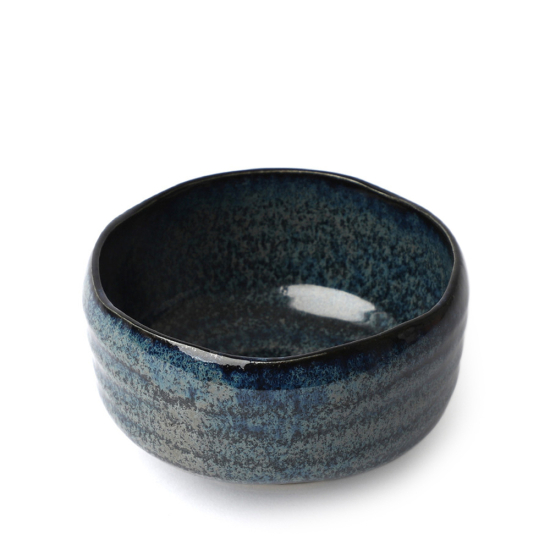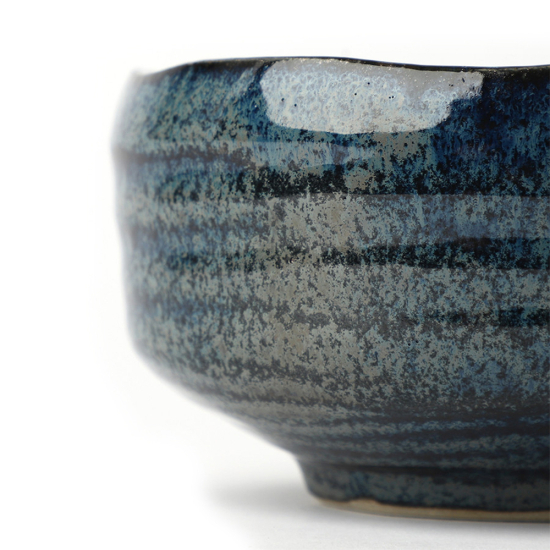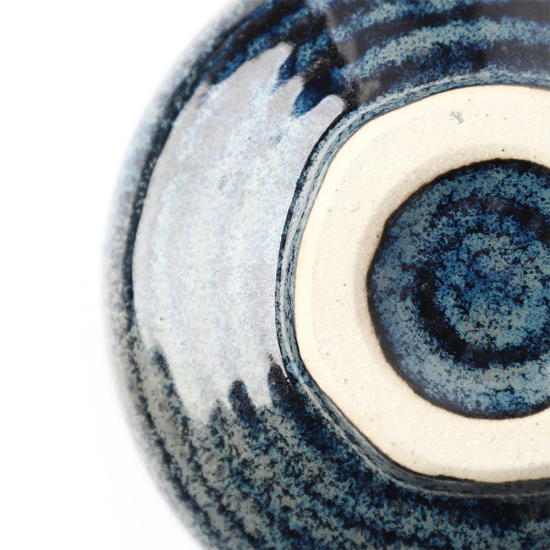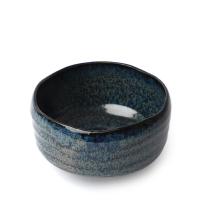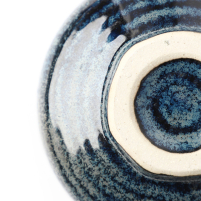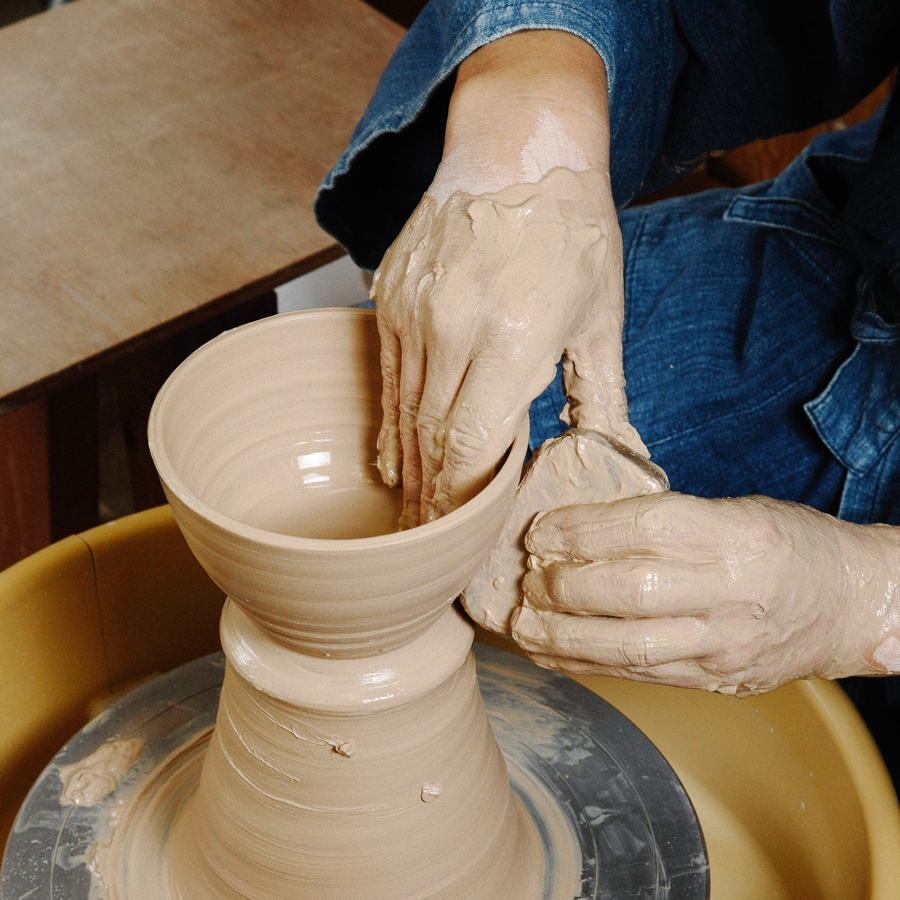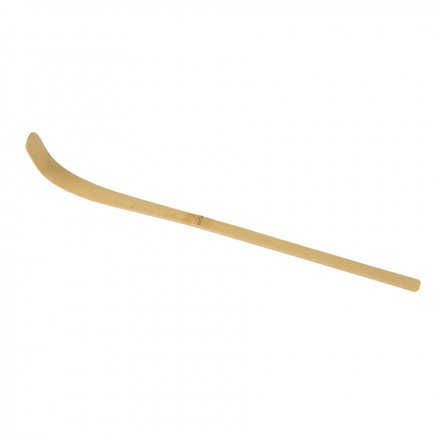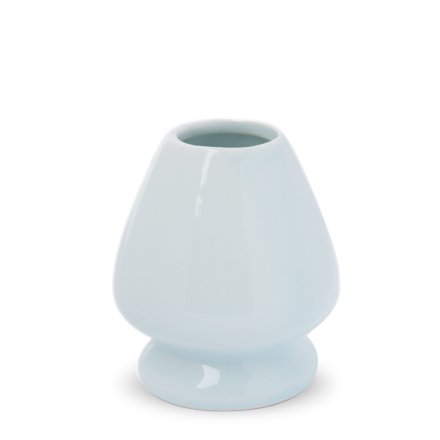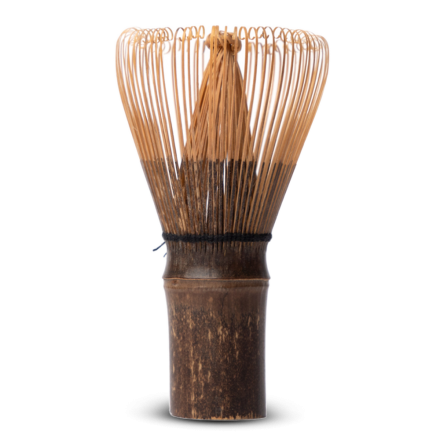Mino-Yaki 美濃焼
The stoneware and porcelain produced in Mino has a very long and well-known tradition. As early as the 11th century, ash-glazed stoneware was produced here. Until the end of the Edo period, Mino ceramics were sold together with ceramics from Seto, which were also very famous, under the name "setomono". The glazing techniques from Mino are particularly striking: Seto glazes as yellow seto (kiseto) and black seto (setoguro), Shino glazes (opaque white glazes) and green copper glazes of Oribe wares.
Rice Straw Ash Glaze Nagashigake
This matchawan (抹茶碗) is turned on the potter's wheel from natural clay into the classic dojime (胴締形) shape. The matcha bowl is made in the style of a light rice straw ash glaze (nagashigake; 流し掛け).



